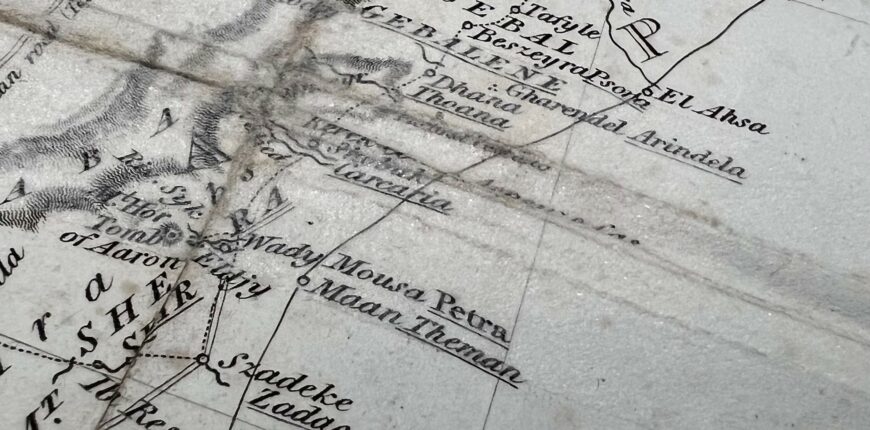John Lewis Burckhardt (1784-1817)

Travels in Syria and the Holy Land (London, 1822)
 Burckhardt was born Johann Ludwig Burckhardt in Lausanne in Switzerland in 1788. Following his studies at the Universities of Leipzig and Göttingen, he arrived in London in 1806, where he made the acquaintance of Sir Joseph Banks (1743-1820), a member of the Association for Promoting the Discovery of the Interior Parts of Africa. The Association agreed to sponsor Burckhardt in a quest for the source of the Niger, so he studied Arabic in London, Cambridge and Malta before travelling to Syria in 1810, directing ‘his journeys through those parts of Syria which had been the least frequented by European travellers’.
Burckhardt was born Johann Ludwig Burckhardt in Lausanne in Switzerland in 1788. Following his studies at the Universities of Leipzig and Göttingen, he arrived in London in 1806, where he made the acquaintance of Sir Joseph Banks (1743-1820), a member of the Association for Promoting the Discovery of the Interior Parts of Africa. The Association agreed to sponsor Burckhardt in a quest for the source of the Niger, so he studied Arabic in London, Cambridge and Malta before travelling to Syria in 1810, directing ‘his journeys through those parts of Syria which had been the least frequented by European travellers’.
The Association having had the good fortune to obtain the services of a person of Mr. Burckhardt’s education and talents, resolved to spare neither time nor expense in enabling him to acquire the language and manners of an Arabian Musulman in such a degree of perfection, as should render the detection of his real character in the interior of Africa extremely difficult.
He arrived in Egypt in 1812, and made his first journey down the Nile, reaching Mahas on the borders of Dongola in Central Sudan in 1813; on his return he became one of the first Europeans to visit the great temple at Abu Simbel. He made a further trip through Nubia to Shendi in Central Sudan, from where he travelled to Suakin, then over the Red Sea to Jedda. At Jedda, he visited Muhammad Ali (1769-1849), the ruler of Egypt, who was in Arabia on a military expedition and who permitted Burckhardt to visit Mecca, provided he could satisfy Muhammad Ali on the question of his faith. ‘Two learned doctors of the law questioned him [Burckhardt] and pronounced him not only a Muslim but an exceedingly learned one’; thus, Burckhardt was able to undertake the pilgrimage successfully in 1814 and visit the Prophet’s Tomb in Medina.
But what can I say of the late Sheik Burckhardt, who was so well acquainted with the language and manners of these people, that none of them suspected him to be an European? His account of the tribes in these countries is so minutely correct, that little or nothing remains for observation in modern Egypt and Nubia. (Giovanni Battista Belzoni, Narrative of the operations and recent discoveries within the pyramids, temples, tombs, and excavations in Egypt and Nubia, 1820)
On his return to Cairo, Burckhardt, still unable to set off for the Niger, compiled his journals into books which he sent to London for publication. He died in 1817 of dysentery and is buried in a Muslim cemetery under the name of Ibrahim ibn Abdallah. Burckhardt’s papers on Nubia and Syria and the Holy Land were edited for publication by the English topographer, William Martin Leake (1777-1860). His travels through Syria, including Aleppo, Damascus, Baalbek and Palmyra are full of rich descriptions. He was the first European to describe the city of Petra in Jordan, and he provided new information on the extent and form of the Gulf of Aqaba, ‘hitherto so imperfectly known as … to be omitted in the maps’.


